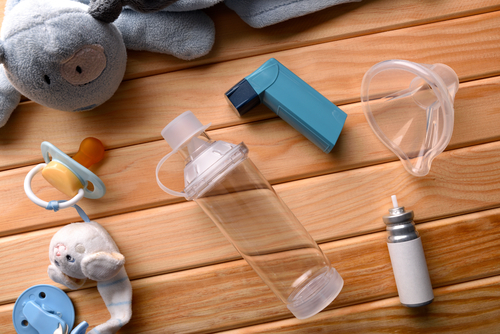Researchers explore ways to keep paediatric asthma patients out of hospitals
ANI May 16, 2018
Researchers from Children's National Health System are exploring and identifying prospects and ways to keep young asthmatic patients out of hospitals.

"We know how to effectively treat pediatric asthma," said Kavita Parikh. "There's been a huge investment in terms of quality improvements that are reflected in how many papers there are about this topic in the literature." However, Parikh noted, most of those quality-improvement papers do not focus on inpatient discharge, a particularly vulnerable time for patients. Up to 40 percent of children who are hospitalized for asthma-related concerns come back through the emergency department within one year. One-quarter of those kids are readmitted.
"It's clear that we need to do better at keeping kids with asthma out of the hospital. The point at which they're being discharged might be an effective time to intervene," Parikh added. To determine which interventions hold promise, Parikh and colleagues recently performed a systematic review of studies involving quality improvements after inpatient discharge. The researchers combed the literature, looking for research that tested various interventions at the point of discharge for their effect on hospital readmission anywhere from fewer than 30 days after discharge to up to one year later.
Their search netted 30 articles. A more thorough review of each of these studies revealed common themes to interventions implemented at discharge:
- Nine studies focused on standardisation of care, such as introducing or revising a specific clinical pathway
- Nine studies focused on education, such as teaching patients and their families better self-management strategies
- Five studies focused on tools for discharge planning, such as ensuring kids had medications in-hand at the time of discharge or assigning a case manager to navigate barriers to care and
- Seven studies looked at the effect of multimodal interventions that combined any of these themes.
When Parikh and colleagues examined the effects of each type of intervention on hospital readmission, they came to a stunning conclusion: No single category of intervention seemed to have any effect. Only multimodal interventions that combined multiple categories were effective at reducing the risk of readmission between 30 days and one year after initial discharge.
"It's indicative of what we have personally seen in quality-improvement efforts here at Children's National," Parikh said. "With a complex condition like asthma, it's difficult for a single change in how this disease is managed to make a big difference. We need complex and multimodal programs to improve pediatric asthma outcomes, particularly when there's a transfer of care like when patients are discharged and return home."
One intervention that showed promise in their qualitative analysis of these studies, Parikh added, is ensuring patients are discharged with medications in hand. In the focus groups, patients and their families have spoken about how having medications with them when they leave the hospital can boost compliance in taking them and avoid difficulties is getting to an outside pharmacy after discharge. Sometimes, they had said, the chaos of returning home can stymie efforts to stay on track with care, despite their best efforts. Anything that can ease that burden may help improve outcomes, Parikh said.
The findings from the study are published in the journal Pediatrics.
-
Exclusive Write-ups & Webinars by KOLs
-
Daily Quiz by specialty
-
Paid Market Research Surveys
-
Case discussions, News & Journals' summaries